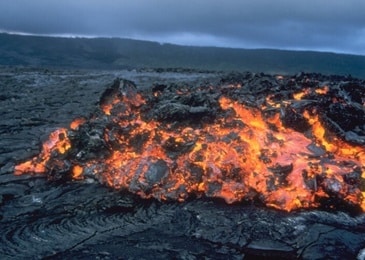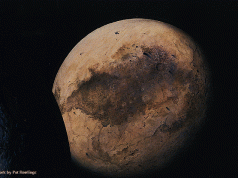It’s fashionable among pseudo-progressives to be rabidly anti-nuclear. Much better to burn coal, and frack rocks, they say, and they smoke. Who are those ingrates? Assuredly ignorant of the fact that all this coal they love so much was generated thanks to. nuclear power! Let me explain. It’s called science.
It is very likely that there will be much more habitable worlds in the galaxy than worlds with even the simplest animals having evolved there. Life is fragile, ours had many close calls. Moreover Earth is characterized by many very special traits: a large, stabilizing moon, a vast liquid ocean, a strong magnetic field shielding Earth surface with its magnetic armor, plate tectonics, volcanoes, etc. I argued this at length in:
https://patriceayme.wordpress.com/2013/11/06/40-billion-earths-yes-no/
All these phenomena come from just one cause: the CENTRAL EARTH FISSION NUCLEAR REACTOR.
The Core Nuclear Reactor turns much of the mass of the planet into a giant iron ocean below our feet.
The electromagnet comes from a dynamo effect caused by a ferociously dynamic iron ocean rotating furiously about. Said ocean is melted by the central nuclear fission reactor at the core of Earth, which is as hot as the sun’s surface.
I long had this theory, and made terrible enemies in geophysics, promulgating it more than a decade ago (I’m not a geophysicist, so I did belong to that church; to make matters worse, my arguments, if true, implied that my math and physics were better. and they were!). Now, though, the theory I long defended with relish, is basically proven.
How? Nuclear fission generates neutrinos, and we have neutrino detectors. The proven flux of neutrino from the core corresponds to fission generating more than half the Earth’s heat flux.
Most of it comes from Uranium 238 and Thorium 232 fission. Ten percent of the heat flux also comes from radioactive Potassium 40 decay.
None of this is surprising: natural nuclear fission reactors existed in Africa up to about a billion years ago, on the surface. They self-moderated with heat, steam, water flow. When French geologists discovered this, the world was astounded.
The iron ocean heated by giant nuke below our feet is the difference of Earth with Venus. Venus is within the habitable zone, just barely, but it lost its water, while its atmosphere got stuffed with CO2, generating a ferocious greenhouse, hot enough to melt lead.
Probes sent there held at most one hour. Why all this CO2? Why not the same on Earth? Because on Earth the C of CO2 is sent by plate tectonics deep inside. Venus does not seem to have plate tectonics. So the C stays in the atmosphere.
Having no nuke inside, Venus got no furious iron ocean, hence no planet-wide electromagnet, hence no magnetic field, hence lost the H2O in its atmosphere: it was robbed by the solar wind. Something similar happened to Mars: no nuke, no iron ocean, no dynamo, no magnetosphere, loss of atmosphere from solar wind, desiccation, loss of greenhouse, etc.
The iron ocean heated by a giant nuke is the difference between Earth and Venus.
Having no nuke inside, Venus got no furious iron ocean, hence no electromagnet, hence no magnetic field, hence lost the H2O in its atmosphere, robbed by the solar wind (hyper velocity protons travelling at 400 kilometers per second from the sun literally knock-off hydrogen atoms into outer space).
Something similar happened to Mars: no nuke, no iron ocean, no dynamo, no magnetosphere, loss of atmosphere from solar wind, desiccation, loss of greenhouse, etc.
Outside of Hollywood scenarios, and publicity hungry scientists, there is no evidence that an impact “almost completely eradicated life on this planet” (see the first comment). But sure it could happen in other systems. The little impact at the end of the Jurassic is much ado about nothing. The Dekkan Traps were the real problem: they caused a dramatic cooling, over millions of years.
https://patriceayme.wordpress.com/2009/11/21/trapped-by-super-traps/
Near complete eradication of life happened because of the rise of life itself, when oxygenation meant the loss of the methane greenhouse, and thus the numerous terrible episode of snow ball Earths. Once again recovered from by CO2 building above the ice from overactive volcanoes (see nuclear reactor above).
Near eradication of life also happened probably from hyper giant core volcanism, which tends to happen every 200 million years or so.
This also shows that, whereas the central nuke monster reactor, the largest known fission reactor in the universe, gives energy and protection to life, it’s never very far from eradicating it.
This idea has been gaining momentum. One may even suspect that it’s a nuke explosion that gave burp to the moon, so to speak.
Few planets will be lucky enough to thread a way through these perils. Let alone the fact that we are protected from comets by Jupiter. Although many systems seem to have Jupiters, or super Jupiters, migrating in, towards the central star, destroying all rocky planets in their wake.
All this makes Earth incredibly improbable. Although there are probably many planets we could seed with Earth’s life, few would have anything approaching animals and plants. They will just crawl with methane-friendly bacteria.
It took nearly three billion years of a goldilocks environment for busy bacteria to start creating something approaching the atmosphere we have now. And the sun’s output cooperated, augmenting just so, to keep the planet at perfect incubating temperature.
It was a miracle. Enjoy it while it lasts. Glaciers are melting in Antarctica at an ever accelerating pace, baffling specialists. But not conspiratorial catastrophists with enough mettle, such as yours truly.
Conclusion: to sustain long term evolution of life on a planet, one needs the right massive amounts of long lived radionuclides and iron (perhaps with enough power to create a moon). Water is not enough to create an habitable world.
Patrice Ayme






